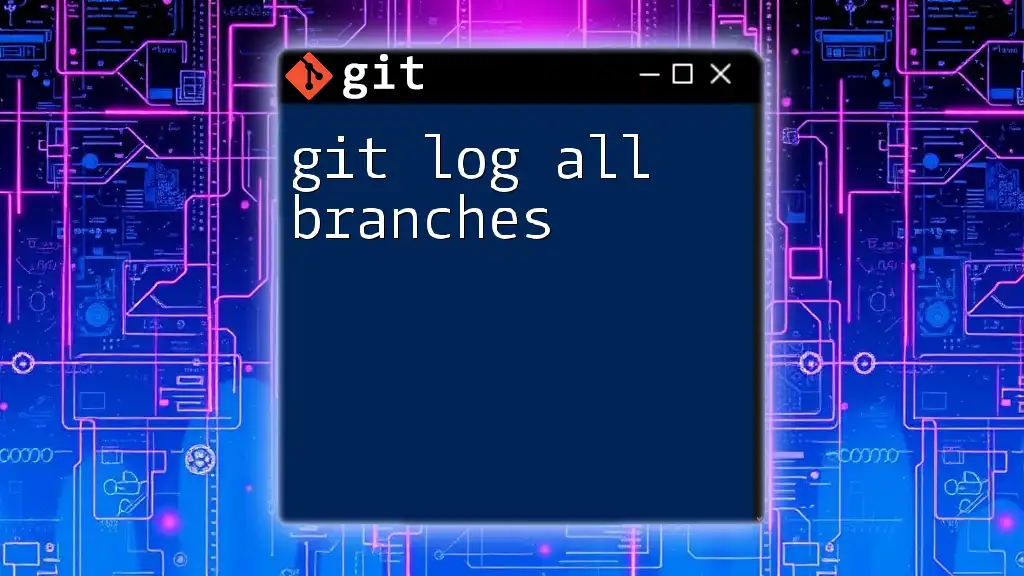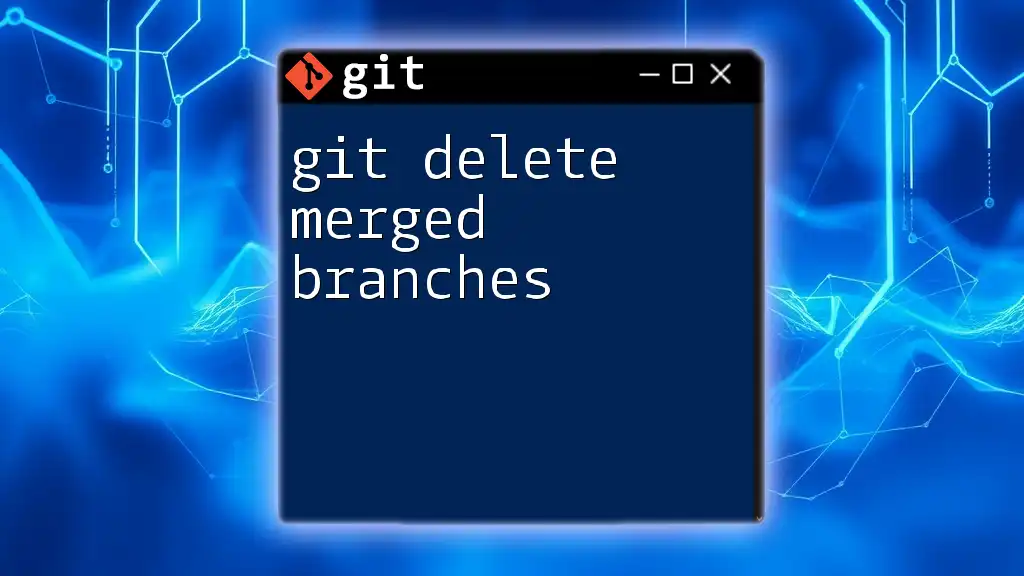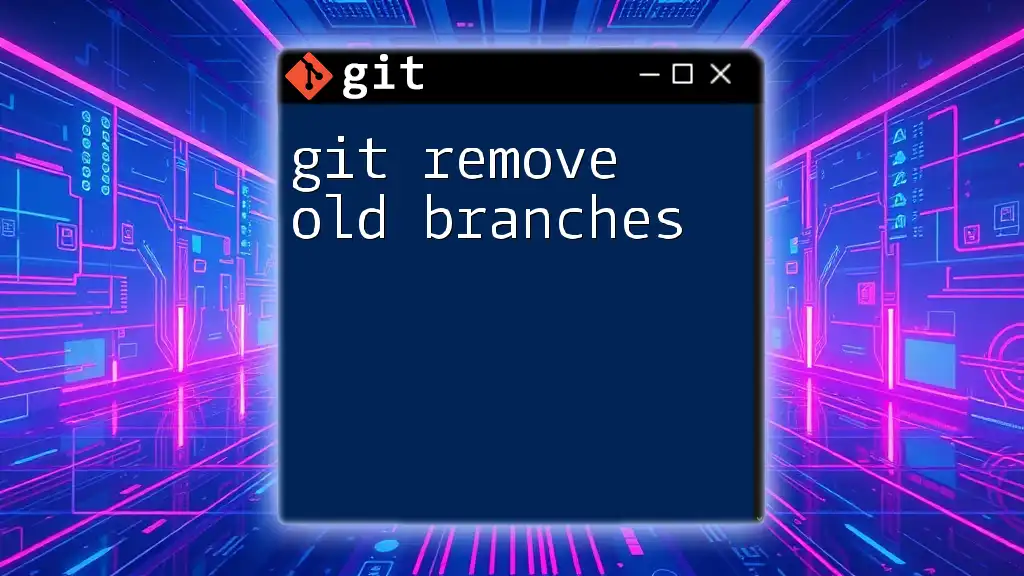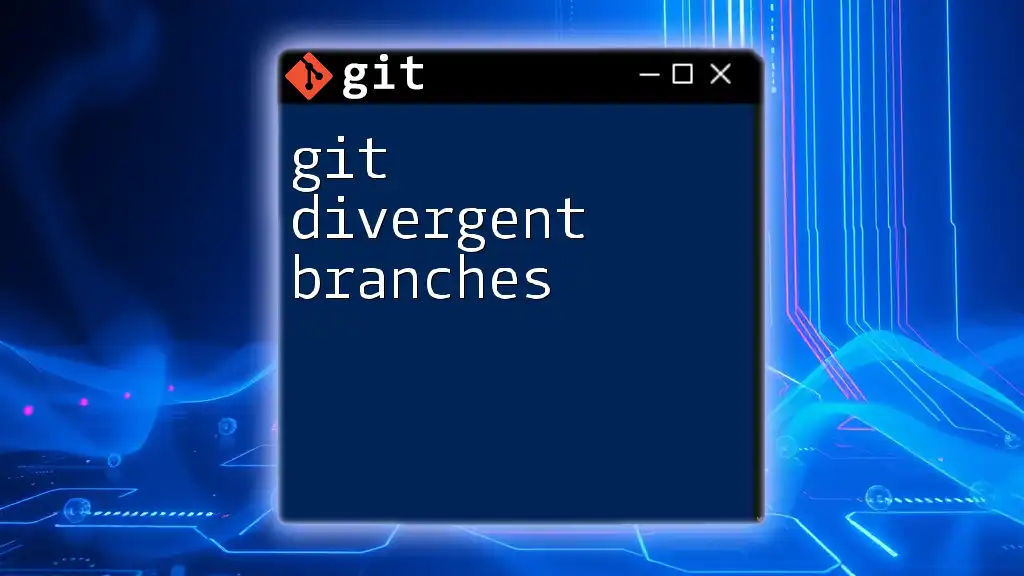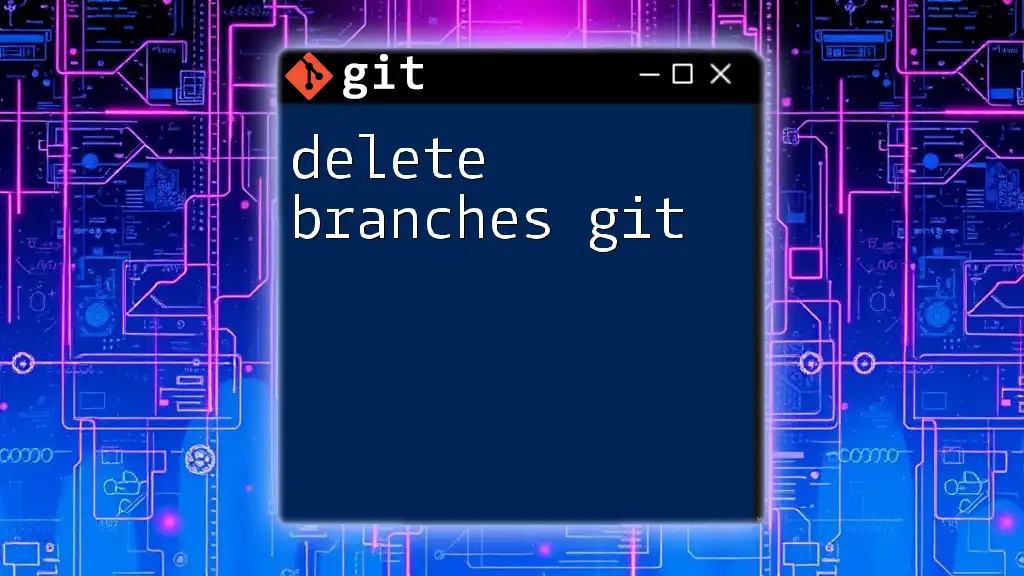To delete all local branches in Git except for the currently checked-out branch, you can use the following command:
git branch | grep -v "master" | xargs git branch -d
Note: Replace "master" with the name of your main branch if it's different.
Understanding Git Branches
What are Git Branches?
Git branches are essential components of a project that allow developers to work on features, fixes, or experiments in isolation from the main codebase. By creating a branch, you effectively create a snapshot of the project's state at a particular moment.
In Git, your current working branch is always referenced by `HEAD`. Think of branches as different paths you can take in your project’s development. By mastering the concept of branches, you enhance your collaborative coding capabilities and manage simultaneous lines of development more effectively.
Importance of Cleaning Up Branches
Over time, as projects evolve, many branches can accumulate from experiments, features, or fixes that may no longer be relevant. Cleaning up these old branches becomes paramount for various reasons:
- Clarity: A cluttered repository can lead to confusion, making it difficult to identify which branches are active or abandoned.
- Performance: Excess branches can slow down certain operations, especially in larger repositories.
- Collaboration: In team settings, ensuring everyone is on the same page regarding what branches are active helps maintain productivity.

Types of Branches in Git
Local Branches
Local branches exist on your machine and are typically where developers undertake their daily work. To view your local branches, you can use the command:
git branch
This command will list all branches in your local repository, highlighting the one you currently have checked out.
Remote Branches
Remote branches exist on remote repositories. They act as references to the state of branches in your remote repositories. To view remote branches, the command is:
git branch -r
This will show you all branches available on your remote server, allowing you to understand the project's shared development status.

Deleting All Local Branches
Pre-requisites
Before proceeding with branch deletion, it’s essential to check your current branches. You should switch to a different branch (commonly `main` or `master`) to ensure you cannot delete the branch you are currently on:
git checkout main
This is crucial as Git prevents you from deleting the branch you are currently using.
Command to Delete All Local Branches
To delete all local branches except for the main branch, you can use the following command:
git branch | grep -v "main" | xargs git branch -d
This command pipeline effectively lists all branches, filters out the main one, and then deletes the remaining branches. Make sure to replace `"main"` with whatever your primary branch is named.
Forcing Deletion
In some cases, you may want to delete branches that have unmerged changes or conflicts. In this case, a forced deletion might be required. The command for this is:
git branch | grep -v "main" | xargs git branch -D
Caution: Using the `-D` flag deletes branches without checking for unmerged changes, which could lead to data loss. Always ensure you no longer need the branches you’re about to delete.

Deleting All Remote Branches
Pre-requisites
It’s important to review the current remote branches before attempting to delete. You can see the remote branches using:
git branch -r
Command to Delete All Remote Branches
To delete all remote branches, you can use the following command:
git push --all :refs/heads/
This command clears all branches from the remote repository. Important: Use this command with extreme caution, as it will remove all branches and potentially disrupt collaboration if other team members are using those branches.
Managing Remote Branches Safely
When it comes to deleting remote branches, communication is key. Always discuss with your team before executing mass deletions, and consider implementing a policy to handle branch deletions in a standardized manner. This keeps everyone informed and minimizes disruption.

Best Practices for Branch Cleanup
Develop a Branching Strategy
Establish a clear naming convention for your branches. This makes it easier to identify the purpose of each branch and helps avoid confusion. For instance, prefix feature branches with `feature/`, bug fixes with `bugfix/`, etc. It is essential for maintaining order, especially in teams.
Regular Maintenance
Implementing a routine review and cleanup of branches helps maintain an organized repository. Consider scheduling a regular time for reviewing old branches and deciding which ones can be safely deleted.
Backup Important Branches
Before deletion, always ensure that significant work is either merged into the main branch or backed up elsewhere. This prevents accidental loss of valuable code.

Common Errors and Troubleshooting
Error: You are not currently on a branch
If you encounter the message, "You are not currently on a branch," it usually means you are in a detached `HEAD` state. To resolve this, simply check out a valid branch using:
git checkout main
Ensure that you do not have uncommitted changes that you wish to keep before switching branches.
Error: You have unstaged changes
If your branch can't be deleted because of unstaged changes, remember this simple rule: either commit or stash those changes. Use:
git add .
git commit -m "Save changes before cleaning up branches"
Alternatively, stash your changes if you want to return to them later:
git stash

Conclusion
Regularly deleting unnecessary branches is crucial for maintaining an efficient and organized Git repository. Understanding the commands to git delete all branches—both locally and remotely—will empower you to manage your projects more effectively. As you become more comfortable with Git, you will find this practice leads to smoother workflows and better team collaboration. Don’t hesitate to reach out to the Git community for more tips and shared learning experiences as you navigate your coding journey!
Additional Resources
For authoritative information, always refer to the [official Git documentation](https://git-scm.com/doc). Exploring recommended Git GUI tools can also enhance your branch management, providing a visual interface that can ease complexity in managing your repository’s state.







